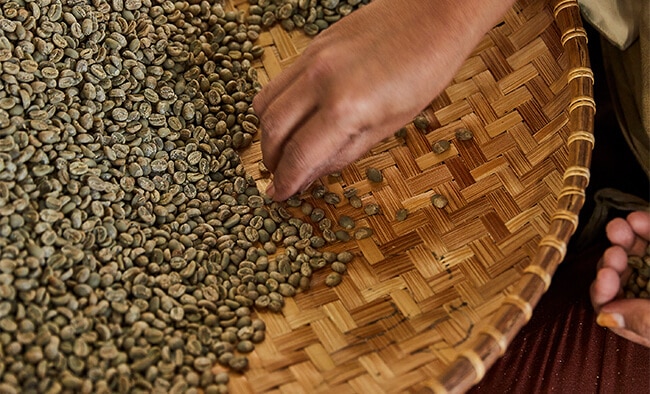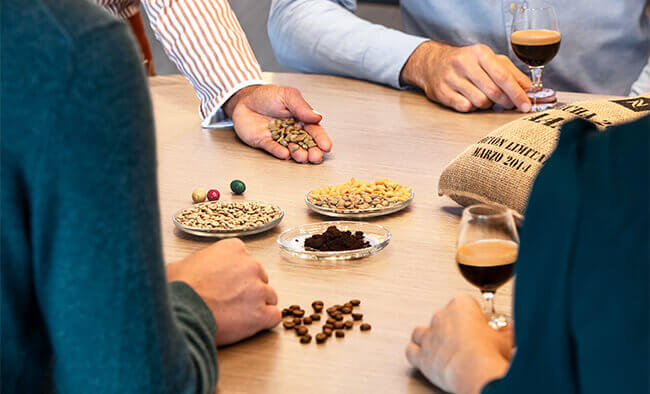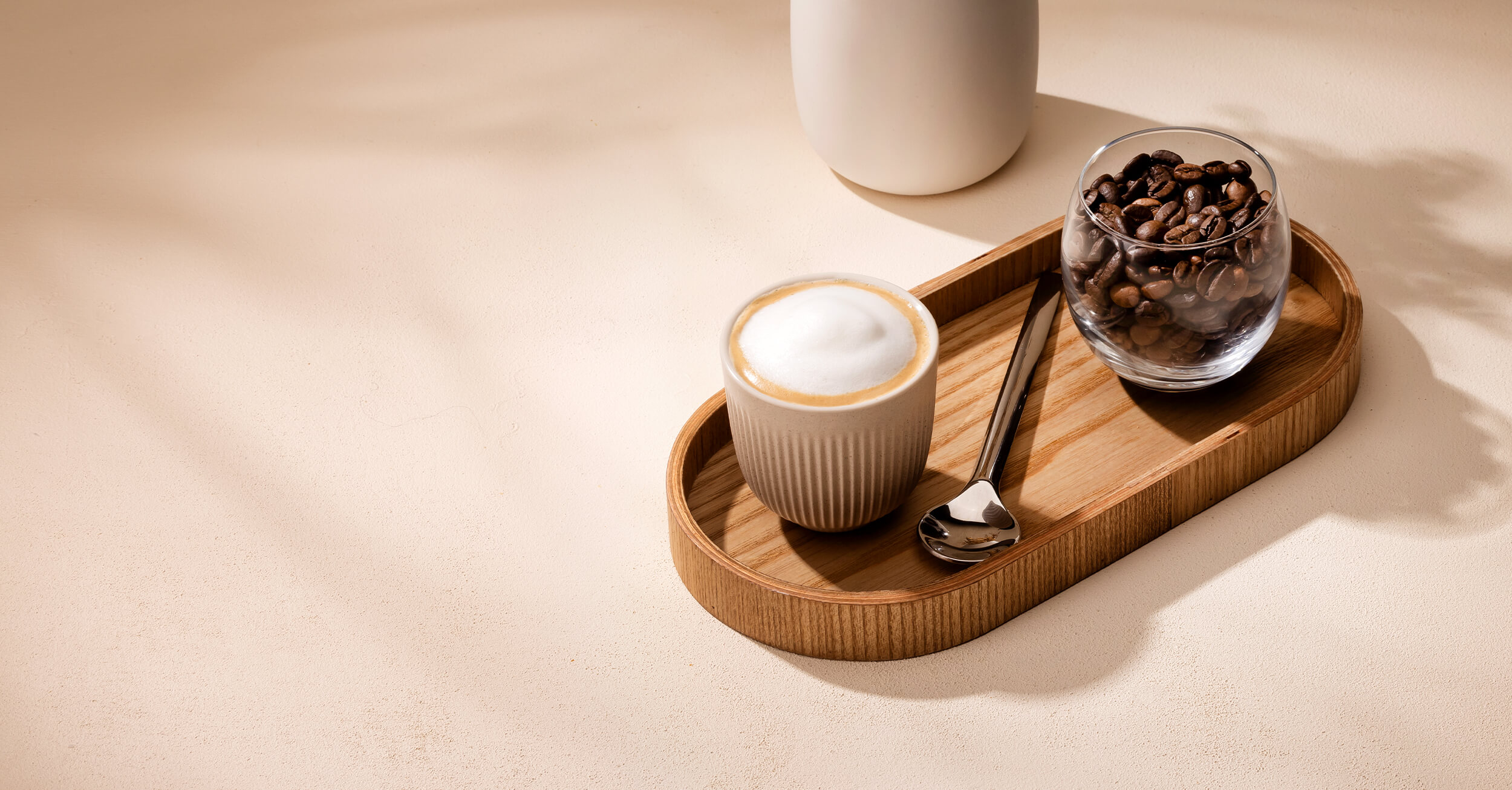It’s well-known that Australians take coffee drinking very seriously.
Just look at the different types of coffee available at a café, restaurant or the many varieties we like to enjoy in our homes: cappuccino, latte, long black, short black, espresso, macchiato, piccolo.
But the truth is, none of us would be able to enjoy those beautiful textures and flavours without a vital step in the coffee-making process: roasting. Here’s all you need to know about coffee roasting.

The secrets of coffee roasting
Roasting plays a big part in determining the final taste of what ends up in your cup. Without it… well let’s just say coffee would be a very different drink. That’s because what most of us think of as coffee beans – small, brown, aromatic things – actually start off looking, and tasting, very different.
Most of us picture coffee beans in their roasted form, but before they’ve been roasted, they’re not brown or hard. They’re in fact small, green seeds (“beans”) known as a coffee cherry, that hang from the branches of coffee plants.
These plants are cultivated in tropical regions around the world, where humidity is above 50% and it rains regularly, making them ideal for coffee growing.
To ensure the highest quality the cherries are usually picked by hand, then dried and pulped to remove the coffee bean from the husks. Now it’s time to transform them from their raw green state, to the crisp, brown, flavoursome beans we know and love.
Producing roasted coffee beans: the process
It takes years of practice and training to master the intricate process of coffee roasting.
A true coffee expert will know the make-up of a bean’s sugars, proteins, acids and more. They will have the ability to ‘read’ beans and perfectly time each roast to match the unique characteristics and flavours of each batch.
This is crucial. The finest coffee beans can be completely ruined in just a few seconds if the roaster doesn’t know what they’re doing.
In short, there are three main stages in coffee roasting. They are:
- The drying stage:An intense heat is applied to the beans – though not so hot to burn them – causing the raw beans to lose their moisture and begin to expand.
- The browning stage: As the heat increases, a chemical process known as the Maillard Reaction takes place, with new compounds emerging from the sugars and amino acids in the heated beans. This is what causes the beans to take on their distinctive brown colour, while also beginning to develop their flavours.
- The development stage: Also known as the ‘first crack’, this is when the beans further develop their rich flavours and aromas, caffeine content is increased, and the beans begin to audibly crack.
After these three stages are complete, lightly-roasted beans will be brought out to cool, retaining much of their natural flavour and acidity.
For darker roasts, the beans will be left in for longer and might even produce a second crack.
Split roasting
At Nespresso we use a range of coffee roasting techniques to make sure we reveal the best from every bean. One of these techniques is known as split roasting, where we roast each coffee origin separately before blending.
Split roasting allows the different coffees to develop their own unique flavours and characters before being blended with complementary origins. By doing this, our coffee experts have flexibility and control over the balance of flavours that go into producing our range of coffee capsules.
The result? New coffee blends that are rich, complex and exciting.
Coffee roasting profiles
Temperature has a big part to play in the final colour and flavour profile of a coffee bean. The combination of time and temperature will determine whether you develop a light, medium or dark roast.
Lightly roasted coffee
Light roasts have the shortest roasting process and therefore retain more of the original flavours of the bean, often holding the coffee plant’s natural acidity, as well as fruity and floral qualities in the cup. They also tend to offer the highest caffeine content of all roast types. Light roasts are – perhaps unsurprisingly – light brown in colour and have little to no oil on the surface of the bean.
A perfect example of a light roast coffee is our Volluto blend, with well-balanced flavours that mix sweet biscuit with a subtle fruitiness.
Medium roast coffee
A slightly longer roasting process reveals a more balanced and aromatic bean. Like the light roasts, medium roasts lack an oily surface but are slightly richer in colour. Their taste is more intense than their lighter counterparts and they have a more balanced flavour and stronger aroma.
Try the beautifully balanced Livanto blend for a medium roasted coffee that’s crowned by a sweet caramel note.
Dark roast coffee
As you would expect, dark roasts have a deep and chocolatey colour and often have an oily sheen on the surface of the bean. As the beans spend the longest time in the roasting process, they lose much of their original flavour and instead reveal a bitter, smoky taste. Coffees with darker roasts tend to work best in milk-based drinks as the strength of the coffee flavour pairs well with sweet and creamy milk.
There’s a reason our Arpeggio blend is Australia’s favourite. Discover its dense, velvety texture and deep dark cocoa notes.

The best coffee roasts
Do you prefer a coffee with a deeper, slightly bitter taste? Or one with a lighter, sweeter flavour? Ultimately, it’s this preference that will determine which roast you choose. But that’s not to say certain roasts don’t generally work better with certain coffee options.
Dark roast blends, for instance, tend to be a good option in milky coffees – lattes, cappuccinos, flat whites – where the strong, bitter flavours aren’t overpowered by the milk, but give it a well-balanced finish.
Medium roast coffees can offer the best of both worlds; strong enough to hold their own as the base for a flat white, but rich and aromatic enough to work well as a long black or macchiato.
Equally, because light roast coffee tends to hold more delicate, complex flavours, they can be the perfect option for long blacks or espressos.
Learning about your roasting preferences will be a matter of taste-testing – in the end it comes down to your individual palate. The best way to discover your favourite is to taste and enjoy lots of different types of coffee – not a bad way to explore the possibilities, is it?

